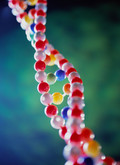Biosimilars/Research
|
Posted 26/11/2010
Biopharmaceuticals typically bind to their biological target, e.g. a protein linked to a disease [1]. Therefore, a biopharmaceutical is likely to be particularly efficacious in a specific subgroup of the patient population. For instance, trastuzumab is a monoclonal antibody that binds to the human epidermal growth factor receptor 2 (HER2) protein and has been shown to be efficacious in the treatment of patients with metastatic breast cancer whose tumours over-express HER2 [2]. This has implications for the clinical development of biopharmaceuticals in that it highlights the need to select the most responsive target population, to collect information on relevant patient characteristics, and to identify suitable biomarkers for responders [3]. It could be argued that, in this respect, biopharmaceuticals involve a paradigm shift towards personalised medicine.























